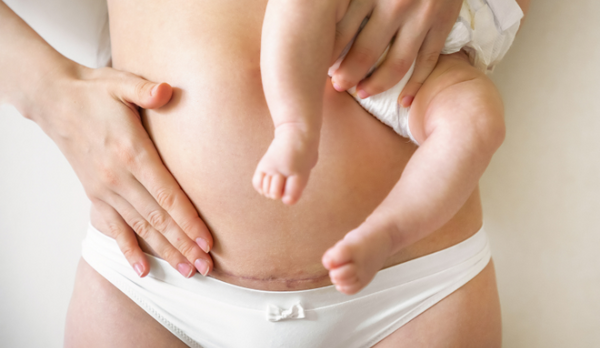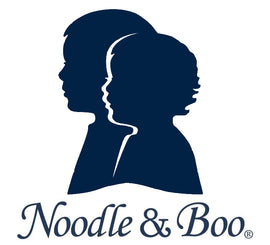
ASK AN EXPERT: Q & A with Liesel Teen, BSN-RN
When we think about postpartum, mostly everyone thinks about vaginal births, but not everyone thinks about C-section births. With information from Liesel Teen, BSN-RN, we hope the following will help new moms with a C-section incoming, and recovering C-section mamas have some of their questions answered.
Remember every mama and their experiences are different – it’s always important to consult with your primary care physician!

Why do I have swollen feet after my C-section?
Your body has gone through an incredible transformation to create life. According to Liesel, swelling after your C-section birth is very common, especially in the feet and ankles!
There are 3 reasons why you’re swelling:
- Your blood volume increased during pregnancy
- IV fluids you had during your procedure
- Hormones shifting after delivery
For most mamas, the swelling will remain for the first 5-10 days after delivery. Most of the time, postpartum swelling will go down on its own as all your extra fluids get redistributed and flushed out.
Here’s Liesel’s advice for postpartum swelling:
- Avoid standing for long periods of time, and take frequent breaks from standing! After your C-section, you shouldn’t be doing too much time standing. Make sure when you’re resting or laying down, your feet are raised or propped up with pillows to keep blood flowing.
- Wear comfortable shoes and clothing to avoid restricting circulation. You may even want to try wearing compression stockings to help blood flow to your legs.
One of our favorite products to use for swelling is Noodle & Boo’s Restorative Leg & Foot Balm. The rich shea butter formula is ideal for daily massages. It’s perfect to use during pregnancy, and it doesn’t hurt to use it postpartum. Massage your aches and swelling with Restorative Leg & Foot Balm, which contains organic blend of citrus and sugar cane extracts.
- Drink plenty of water! It’s important to stay hydrated, and it’ll help clean out your system.
What should I know about incision types and C-section scars?
Knowing what type of incision will help you care for it properly. If you plan on having more births, certain incisions could increase birth complications. This is just a basic introduction to the types of incisions, so if you want to know more you may want to ask your doctor.
There are 2 different types of incisions to get to your uterus:
- Horizontal incisions: This is the most common type of incision, and it’s very low on the abdomen. It does tend to be less painful and less visible after healing.
- Vertical Incision: Also known as the classic cut! Fortunately, this type of incision is very uncommon and only used unless there is an emergency where baby needs to come out fast! This incision goes from your belly button to pubic line, and can leave a visible scar.
After this incision, there is the actual uterine incision:
- Low transverse: This is the most common type of incision. This is used almost exclusively in C-sections that are planned. The low transverse incision is used since it heals better and carries the least risk of complication!
- Classical: This is not a common incision at all unless it is an emergency.
- Low vertical: Again, not a common incision and very similar to the classical incision. This incision is used during emergencies, and it’s less dangerous than the classical incision.
Once your C-section incision has healed along with your doctor’s approval, treat your skin with Postpartum Oil and Perfecting Crème. The therapeutic blend of oils in Postpartum Oil will help nourish and restore the condition of postpartum skin. Mamas with sensitive skin were kept in mind, so Postpartum Oil’s has an exclusive blend of organic oils to nourish and help enhance the skins natural recovery process. Perfecting Crème is every mama’s must have! The ultra-rich cocoa butter and avocado oil leave the skin feeling delightfully soft and smooth.

When can I take a bath after my C-section?
The truth is, you must wait before you can submerge your incision after your c-section. Even though nothing feels better than soaking in warm water, submerging your incision in non-sterile water can increase the chances of getting an infection. When you feel stable, you can definitely have a shower!
Generally, it’s safe around 3-4 weeks postpartum. Every mama will be healing at different pace, so it’s important to check in with your doctor to make sure you’re all fully recovered.
What’s the best position to sleep after my C-section?
With a newborn, it can be tough to get rest. It’s even harder to rest when you’re recovering from your C-section. On top of general pain and soreness, any pressure on your healing wound is extremely uncomfortable.
You will have to find a way to sleep by keeping pressure off your abdomen! During the first few days after your C-section, you’ll be mostly sleeping on your back. Some mamas find it more comfortable with a rolled blanket or pillow under their legs. You may even want to try propping your upper body to sleep in something like a reclined back-sleeping position.
When your incision starts heal and not hurt too much, you can start to sleep on your side.
What are other red flags to be aware of after my C-section?
Before you’re discharged from the hospital, your doctor and postpartum nurse will review red flags and reasons to call them. Liesel says, “Any sign of infection, and anything that seems abnormal in your mind is worth a call! We’d rather you call and it be a false alarm than have something go unreported.” Don’t hesitate to let your provider know if there’s something you’re unsure about Mama!
Red flags of postpartum swelling
Sometimes, postpartum swelling can be more serious. It could be a sign of a more serious condition so when these red flags start popping up, it’s time to give your doctor a call.
- Instead of decreasing, your swelling increases.
- Uneven swelling (one leg is more swollen than the other)
- Sudden swelling that comes on quickly.
- Your swelling leaves an indentation, or pit, that remains even after you stopped pressing on it.
- You start showing signs of preeclampsia (a serious blood pressure condition) in addition to the swelling. The signs look like severe headaches or blurry vision.
- Your C-section scar swells, along with bleeding, foul smelling drainage, or increased pain.

Other things to look out for
- Painful urination
- Soaking through more than 1 pad every hour, and/or passing blood clots larger than golf balls.
- Signs of postpartum depression, postpartum anxiety, or other postpartum mood disorders
- Fever over 100.4 degrees Fahrenheit, chills, or muscle aches.
Keep in mind that this isn’t everything about C-sections, but it’s a starting point. More than anything, follow the advice given to you by your provider!
About Liesel Teen
Liesel Teen, BSN, RN is a labor and delivery nurse and the founder of Mommy Labor Nurse. Mommy Labor Nurse equips pregnant women with the tools, knowledge, and confidence they need to erase the unknown, feel in control, and have an even better birth - no matter how they deliver.
With 8 years and counting as a bedside labor and delivery nurse, Liesel knows that knowledge is the key to an even better birth. To date, over 40k women have completed a Mommy Labor Nurse birth class, eliminated fear, and been empowered by Liesel’s comprehensive childbirth education.
DISCLAIMER: Content on this site is not a substitute for professional medical or healthcare advice, diagnosis, treatment, dietary, or safety advice, and may not be used for such purposes. Always seek the advice of your physician or other qualified expert with any questions you may have regarding a medical question, condition, or safety concern. Reliance on information presented on this site is at your own risk. This site contains the opinions and views of others and does not represent the opinions and views of Noodle & Boo, LLC. Given the interactive nature of this site, we cannot endorse, guarantee, or be responsible for the accuracy or efficacy of any content generated by our users or bloggers.










Leave a comment